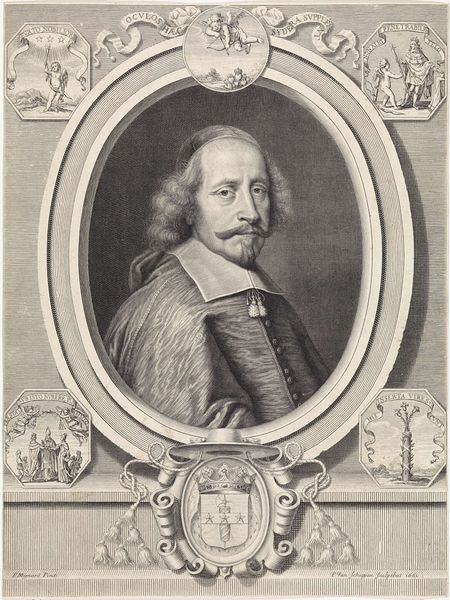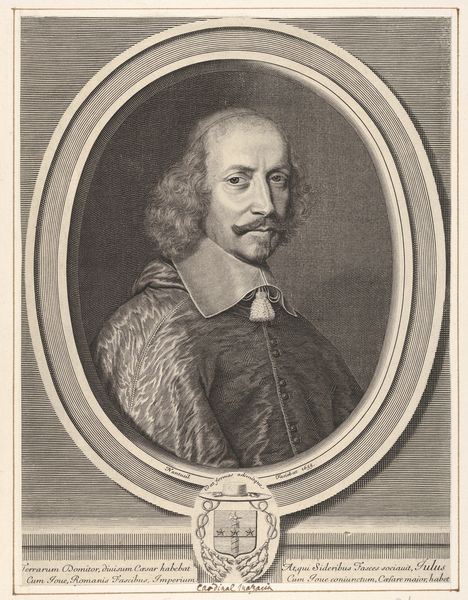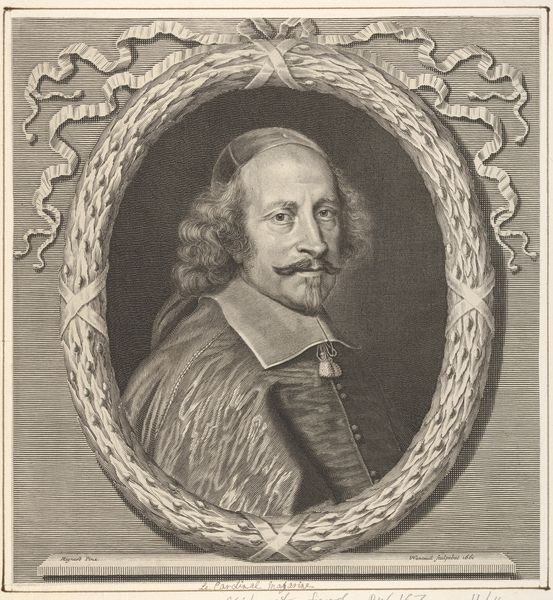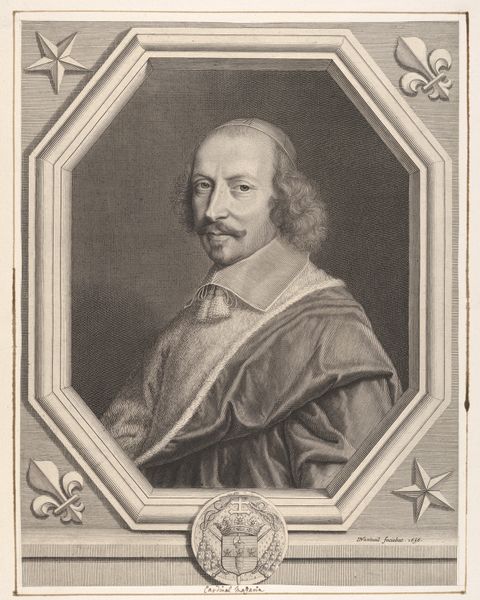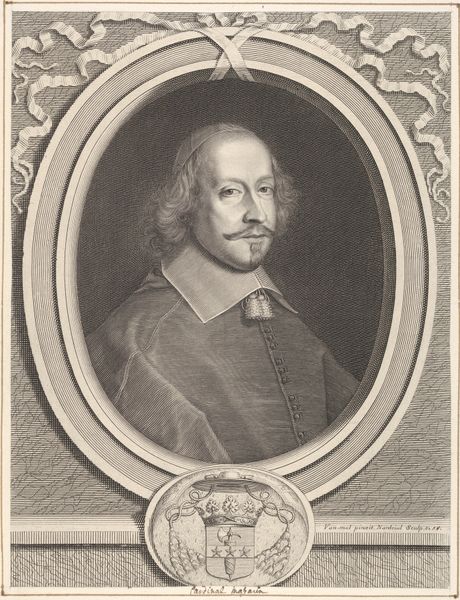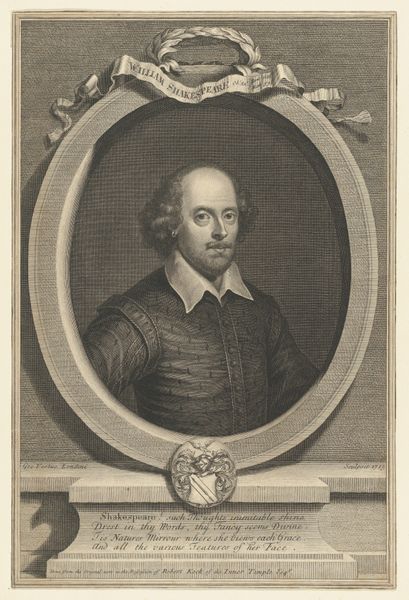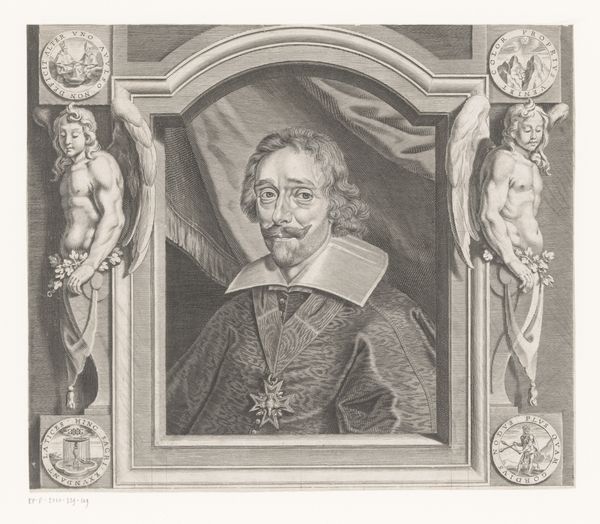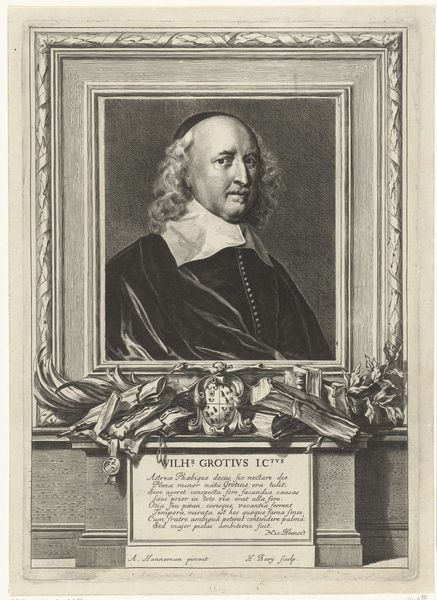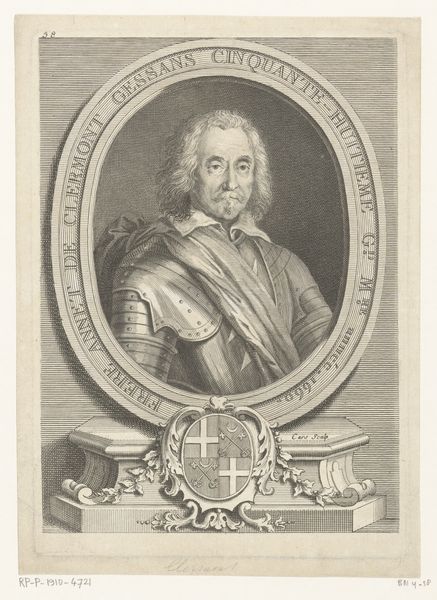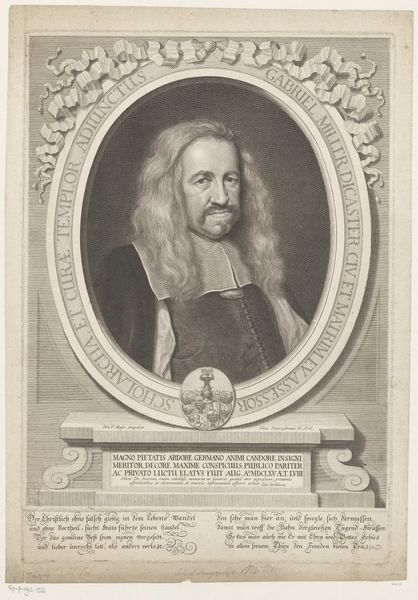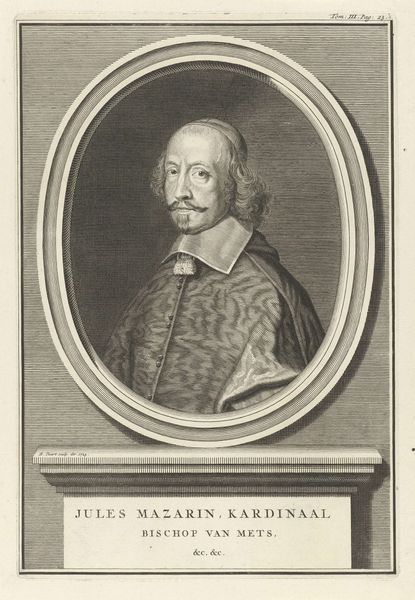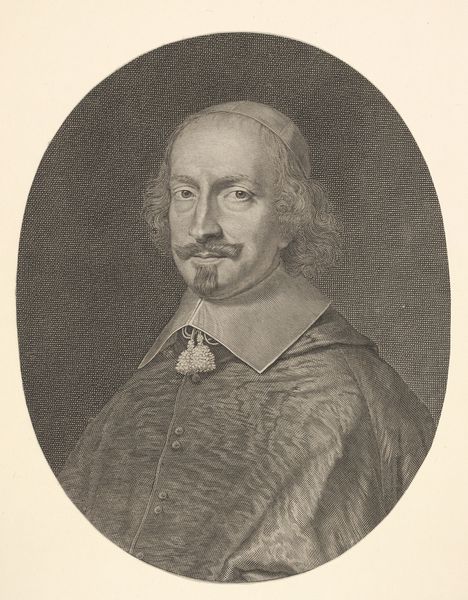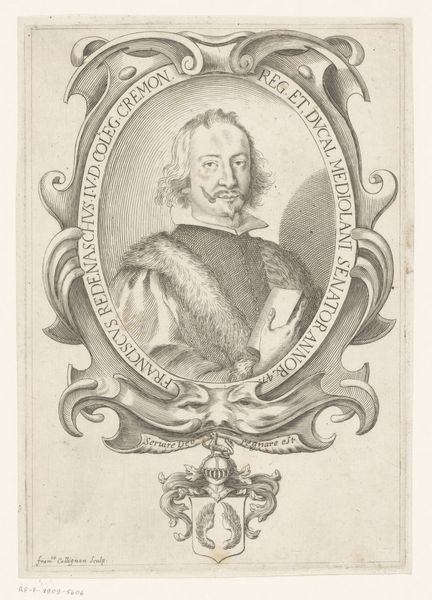
drawing, print, engraving
#
portrait
#
drawing
#
baroque
# print
#
old engraving style
#
engraving
Dimensions: Sheet: 13 9/16 x 16 3/4 in. (34.4 x 42.5 cm)
Copyright: Public Domain
Curator: Looking at this striking engraving, Cardinal Jules Mazarin, crafted by Robert Nanteuil around 1660, it's the level of detail that grabs me first. A really fine example of Baroque portraiture, currently housed at the Metropolitan Museum of Art. What's your initial read? Editor: Imposing! There's an immediate formality about it. The textures in the drapery, the detailing on the face... it's a carefully constructed image of power. He’s framed, almost trapped, by symbols and inscriptions. Curator: Absolutely, the frame itself bears an inscription: "PACEM CVM LUMINE MITTVN... MAZARINVS CARDINALIS", meaning "Mazarin, Cardinal, sends peace with the light". You see it reinforced in the surrounding cartouches displaying lilies, references to Sorbonne, wreaths of laurel leaves, and a wheel inside another wreath on the right. There is a constant reminder to Mazarin’s office and high importance within society. Editor: And those symbols carry a heavy weight. The fleur-de-lis traditionally signal French monarchy and its connection with faith and legitimacy. They evoke a strong sense of French identity and power projection. That declaration of sending ‘peace with light’ almost reads as propaganda now, knowing the tumultuous times and Mazarin's rather divisive political moves. Curator: Indeed, the lilies’ presence is especially potent considering Mazarin’s complicated relationship with the French populace, despite his role in solidifying French power. In visual imagery, such symbols become rallying points and cultural shorthand, intended to resonate with an audience familiar with their historical meanings. They invoke, persuade, justify. The artist would be making deliberate connections between this one man and historical continuity of rule. Editor: Making this more than just a portrait. The frame transforms it into a political statement, influencing the subject's public image in 17th-century France. How much of it do you feel truly reflects the man versus the carefully crafted role? It feels less about capturing personality, and more about enforcing status, and maintaining an impression of authority. Curator: That friction between person and persona is, perhaps, what makes such portraits endlessly fascinating, isn't it? That continuous translation of power, reputation, into lasting artistic representations. Editor: Precisely. This is about presenting a facade, ensuring that the right message endures beyond the man himself. Quite a compelling lens through which to view both Mazarin's life and Nanteuil's artistic choices.
Comments
No comments
Be the first to comment and join the conversation on the ultimate creative platform.
